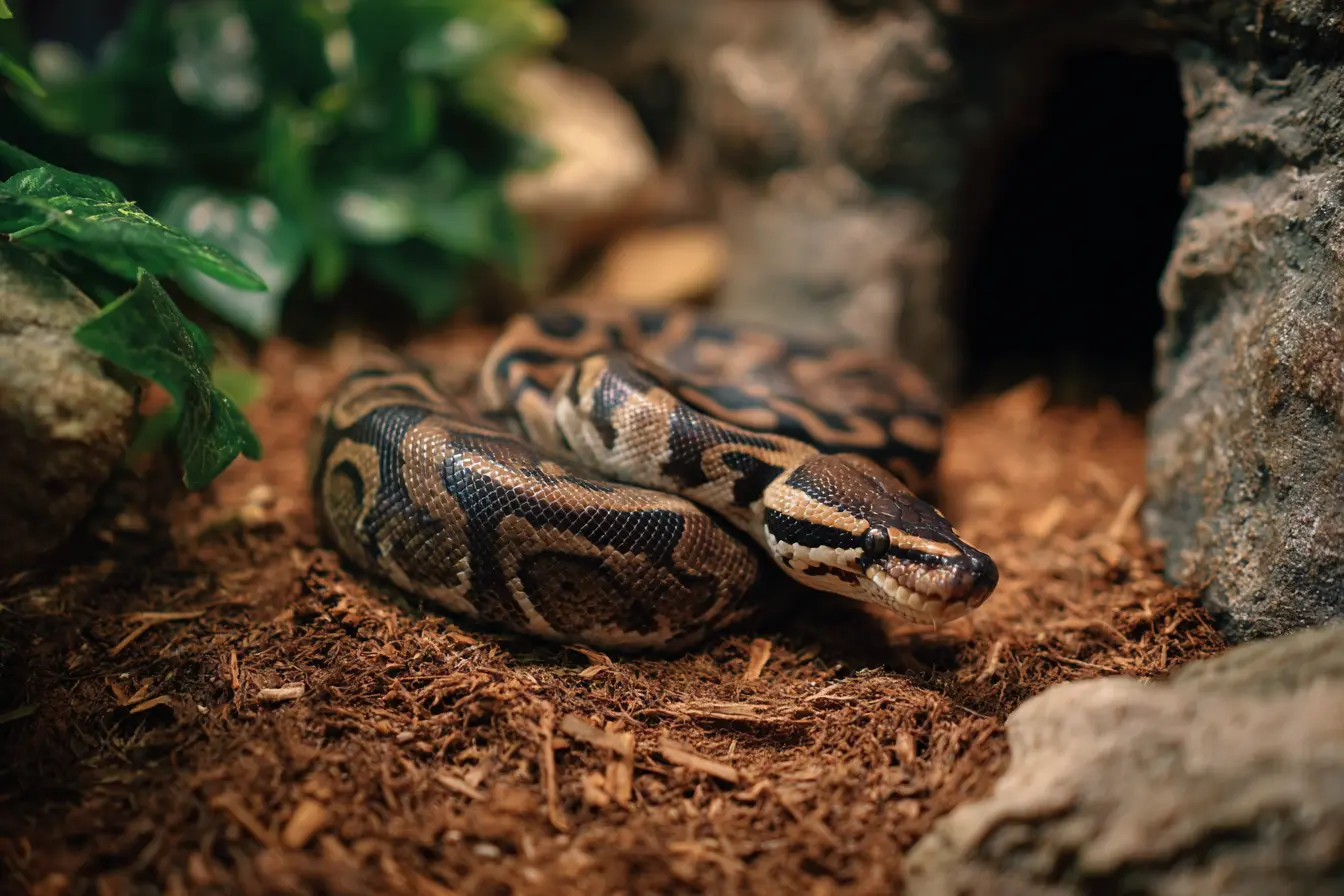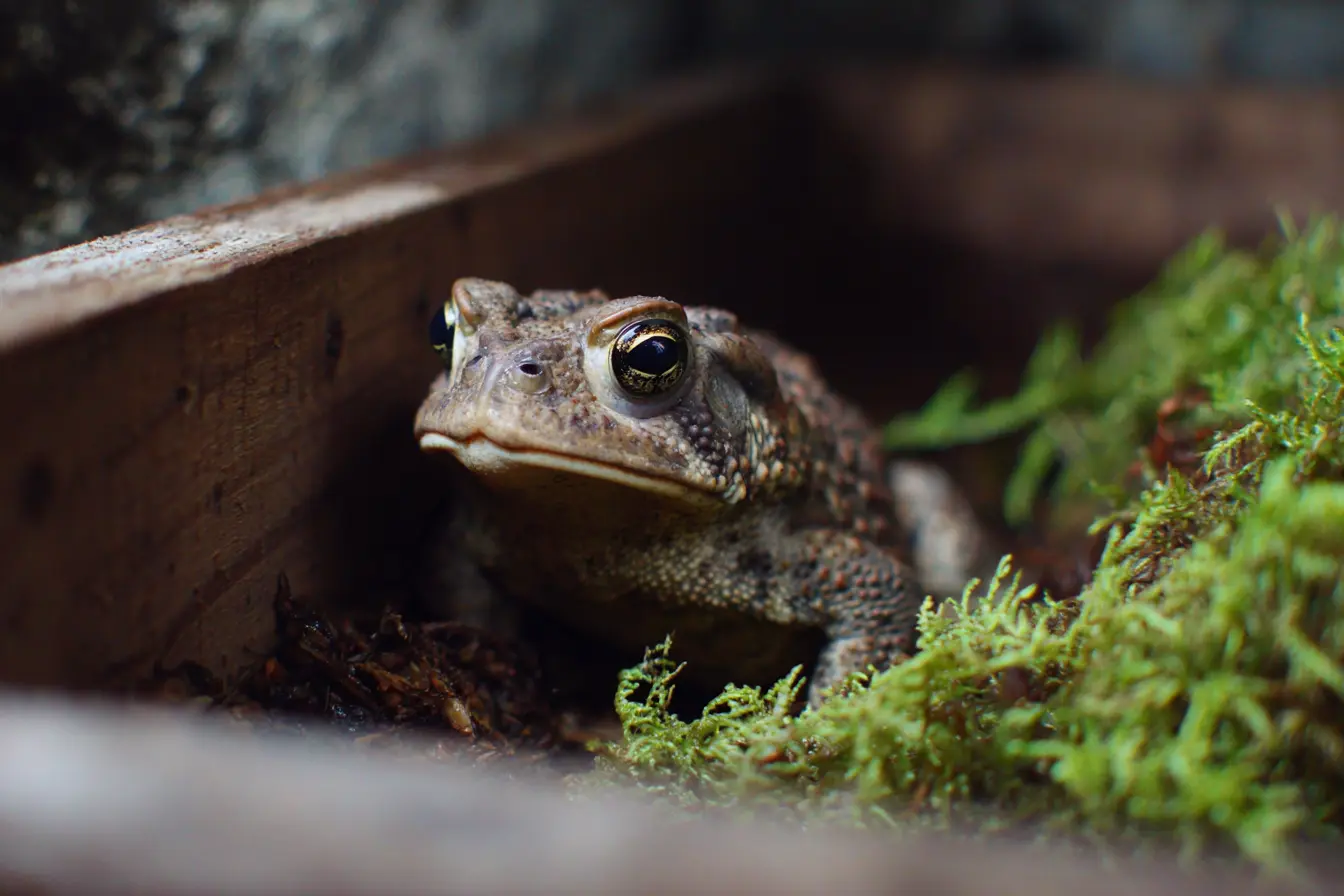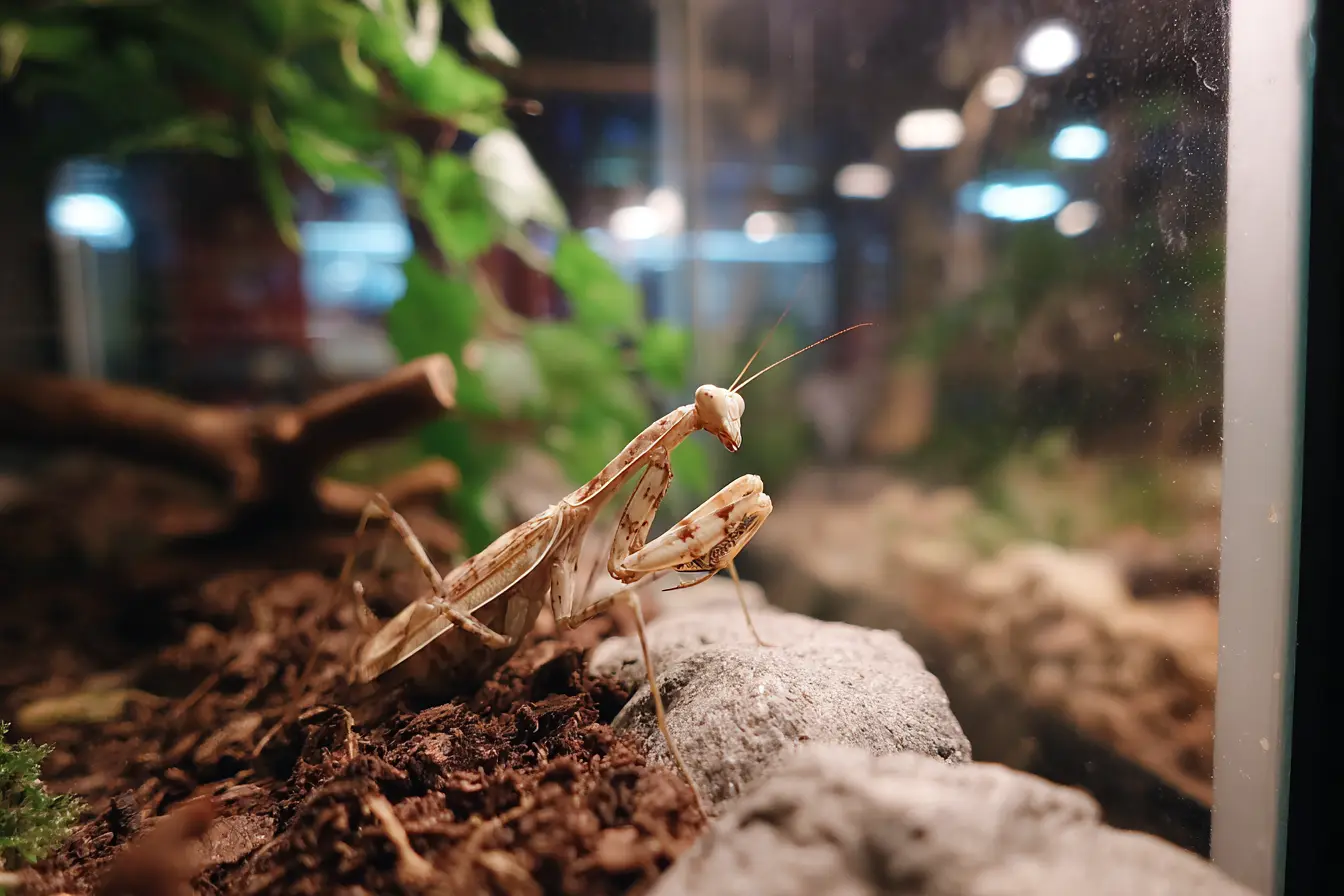
The Complete Guide to Keeping Vampire Crabs
Vampire crabs (Geosesarma spp.) are small, vividly coloured semi-terrestrial crabs that have gained popularity in the exotic pet hobby. Known for their bright purple or orange carapaces, glowing yellow eyes, and fascinating behaviours, they are both visually striking and relatively easy to care for with the right setup. This guide provides everything you need to know to successfully keep vampire crabs in captivity.
What Are Vampire Crabs?
Vampire crabs belong to the genus Geosesarma, a group of small, freshwater crabs native to Southeast Asia, particularly in regions of Indonesia, Java, and Sulawesi. Despite their intimidating name, vampire crabs are completely harmless and earned their name due to their glowing eyes and nocturnal behaviour.
They are:
- Small: Adult size is about 2–3 cm across the carapace
- Semi-terrestrial: They spend most of their time on land but require access to freshwater
- Communal: Can live in small groups if given enough space and hiding spots
- Long-lived for crabs: Typically live 1.5 to 2 years, sometimes longer in ideal conditions
Enclosure Requirements
Vivarium Size
Although vampire crabs are small, they need a well-structured habitat with both land and water areas. A 30-litre tank is suitable for a group of 4–6 crabs.
Land vs Water Ratio
Vampire crabs are semi-terrestrial, so the enclosure should be a paludarium — a setup that includes both land and shallow water areas.
Recommended layout:
- 70% land, using sloped terrain, rocks, or foam structures
- 30% shallow water, no more than 3–5 cm deep, filtered and fresh
They require dry areas to climb, hide, and moult safely, as well as access to fresh water for hydration and feeding.
Substrate
On the land portion, use moisture-retaining and burrow-friendly substrates like:
- Coconut fibre (coir)
- Organic topsoil (chemical-free)
- Sphagnum moss
- Leaf litter for enrichment
Substrate should be kept moist but not waterlogged. Drainage layers using hydro balls and mesh may be added beneath the substrate to prevent stagnation.
Water Conditions
Vampire crabs are freshwater species and cannot tolerate brackish or saltwater.
- Use dechlorinated or RO water
- pH: 6.8–7.5
- Temperature: 24–28°C
- Use a sponge or internal filter with a gentle flow
- Partial water changes (20–30%) weekly
Heating may be required if room temperatures fall below 22°C.
Humidity and Temperature
Maintain high humidity levels:
- Humidity: 75–90%
- Temperature: 24–28°C
Mist the enclosure daily and monitor with a hygrometer. Use a heat mat or ceramic heat emitter if necessary, particularly in colder climates.
Lighting
Vampire crabs are nocturnal, so they don’t need strong lighting. However, a low-level LED light on a 12-hour cycle can help mimic day/night rhythms and enhance viewing. Avoid direct sunlight or harsh bulbs that could dry out the enclosure.
Decor and Hides
Provide plenty of:
- Cork bark
- Coconut shells
- Climbing branches
- Rocks
- Live or artificial plants (Java moss, pothos, anubias, etc.)
These create visual barriers, reduce stress, and encourage natural behaviours like climbing and hiding.
Diet and Feeding
Vampire crabs are omnivores and opportunistic feeders. Their diet should include both animal protein and plant matter.
Protein Sources:
- Bloodworms (frozen or live)
- Brine shrimp
- Crushed snails
- Insect larvae (e.g. black soldier fly larvae)
Plant-Based Foods:
- Leafy greens (spinach, kale, dandelion)
- Algae wafers
- Sinking shrimp pellets
- Blanched courgette or carrot
Feed small amounts 3–4 times per week, removing uneaten food after a few hours to maintain water quality. They also scavenge and help clean up the tank.
Social Behaviour and Tank Mates
Vampire crabs are relatively peaceful within species, though males may show territorial behaviour.
Tips for groups:
- Keep 1 male to 2–3 females per group to reduce aggression
- Provide numerous hiding spots and separate zones
- Avoid overcrowding
Tank mates should be selected with caution:
- Suitable: Small isopods, springtails (clean-up crew)
- Avoid: Fish, large shrimp, or other aggressive crabs
They may predate on very small or slow-moving inverts.
Moulting
Crabs must moult in order to grow, during which they are very vulnerable.
- Provide moist hiding areas and stable humidity
- Do not disturb them during this time
- Offer calcium sources (cuttlebone, eggshell, or mineral blocks) to aid exoskeleton formation
Post-moult crabs may remain hidden for several days while their new shell hardens.
Breeding
Breeding vampire crabs in captivity is possible and has been successfully achieved by many hobbyists.
Key points:
- Crabs reach maturity at around 6 months
- Females carry fertilised eggs under their abdomen for several weeks
- Once hatched, young crabs are fully formed miniatures
- Hatchlings are terrestrial and should be separated from adults to avoid predation
If breeding is a goal, provide dense foliage and small crevices where females can retreat safely.
Common Health Issues
Vampire crabs are hardy, but poor water quality or incorrect humidity can lead to stress and illness.
Watch for:
- Lethargy or constant hiding
- Unsuccessful moults
- Shell discolouration or lesions
- Aggression due to overcrowding
Ensure proper tank maintenance, clean water, and a varied diet to prevent issues.
Lifespan and General Care
- Lifespan: 1.5–2.5 years in captivity
- Activity: Mostly nocturnal, though some are active at dawn and dusk
- Maintenance: Weekly water changes, daily misting, and bi-weekly substrate checks
They are a rewarding species for aquarists and exotic invertebrate enthusiasts alike, combining beautiful aesthetics with interesting behaviours.
Final Thoughts
Vampire crabs are a captivating and relatively easy species to keep with the correct paludarium setup. Their exotic appearance, manageable care requirements, and potential for breeding make them ideal for intermediate-level keepers who are ready to explore the world of semi-terrestrial crustaceans.
With patience, planning, and attention to their environmental needs, you can enjoy a thriving colony of these otherworldly creatures in your own home.
Related Vets
Vets near you
Speciality vets
- Aquatics vet specialists
- Birds vet specialists
- Camelids vet specialists
- Cats vet specialists
- Cattle vet specialists
- Deer vet specialists
- Dogs vet specialists
- Equines vet specialists
- Exotic vet specialists
- Goats vet specialists
- Pigs vet specialists
- Poultry vet specialists
- Sheep vet specialists
- Small Mammals vet specialists
- Wild vet specialists










